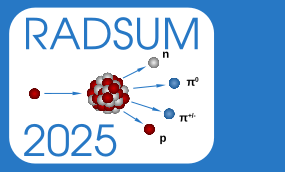Speaker
Description
Understanding irradiation damage in high-temperature superconductors is important as new compact fusion reactors rely on these materials to generate the high magnetic fields needed to confine the plasma. The superconductor of choice is (RE)Ba2Cu3O7-δ (RE = rare earth element), REBCO. We have used high-energy-resolution X-ray absorption spectroscopy (XAS) to probe the local environment around the Cu atoms in irradiated REBCO coated conductors as a way of understanding the defects that form. In XAS, a core-electron is excited into the unoccupied states and the resulting spectrum reflects the local environment of that atom. Spectra from all the atoms of an element contribute to the experimental spectrum and interpretation of the edge features resulting from multiple environments can be challenging. Using density functional theory (DFT), we have simulated spectra from a variety of specific atom environments (including a number of defects), which allows us to interpret our experimental spectra in terms of atomistic structures. We find that the differences between spectra from pristine and irradiated materials can be explained by the presence of Frenkel defects in the irradiated sample.
